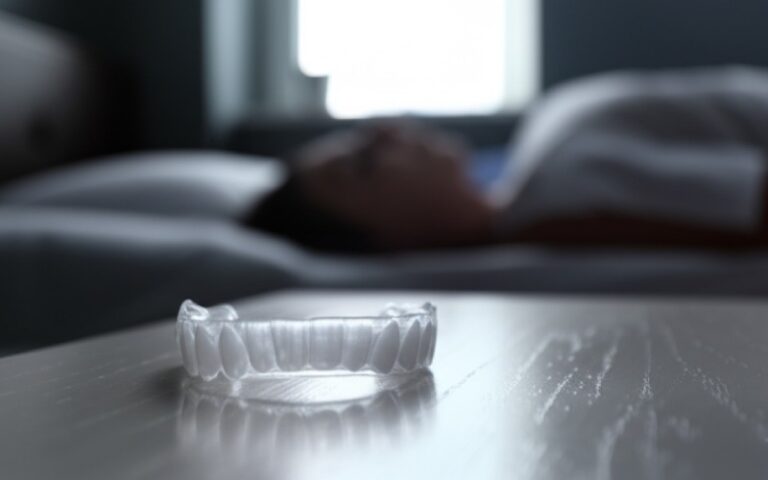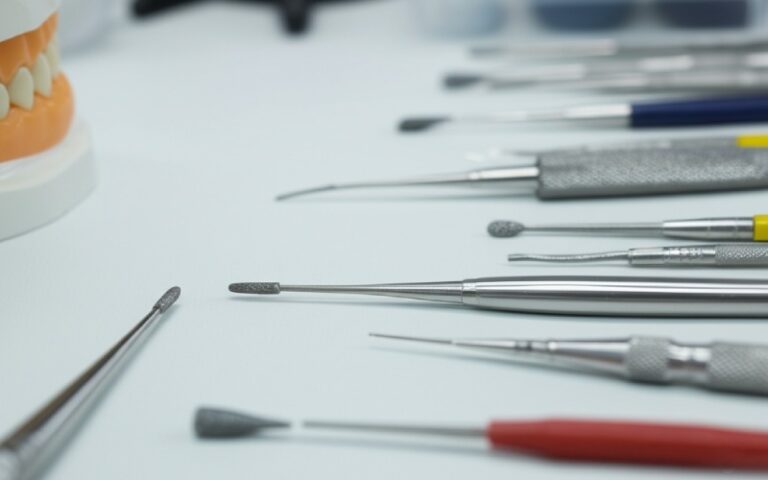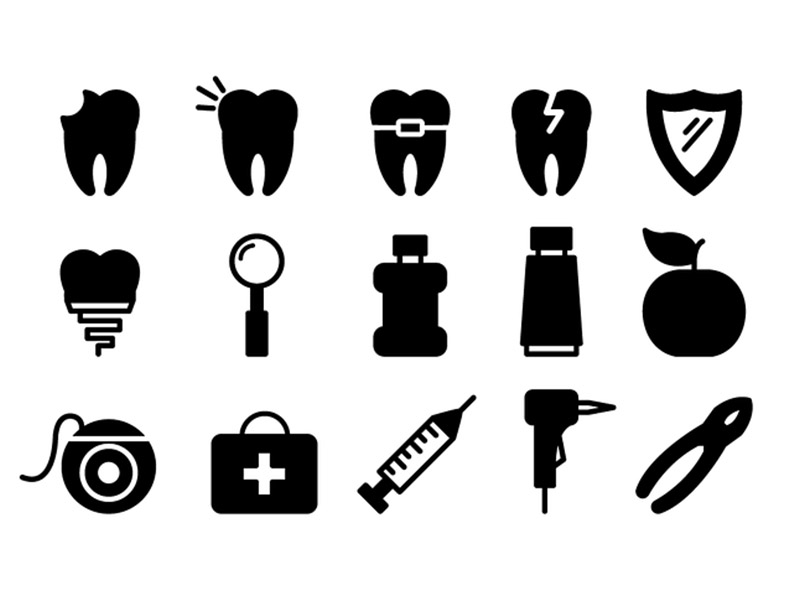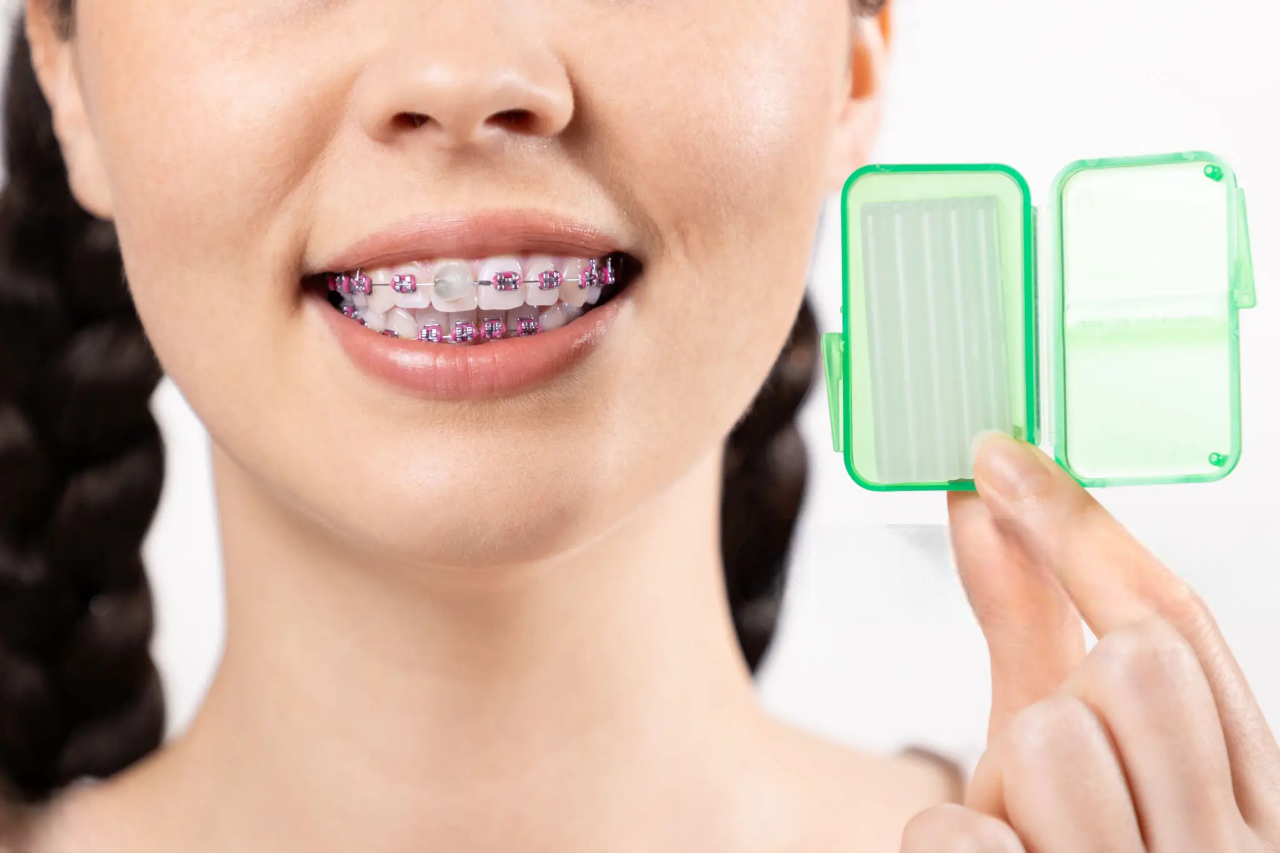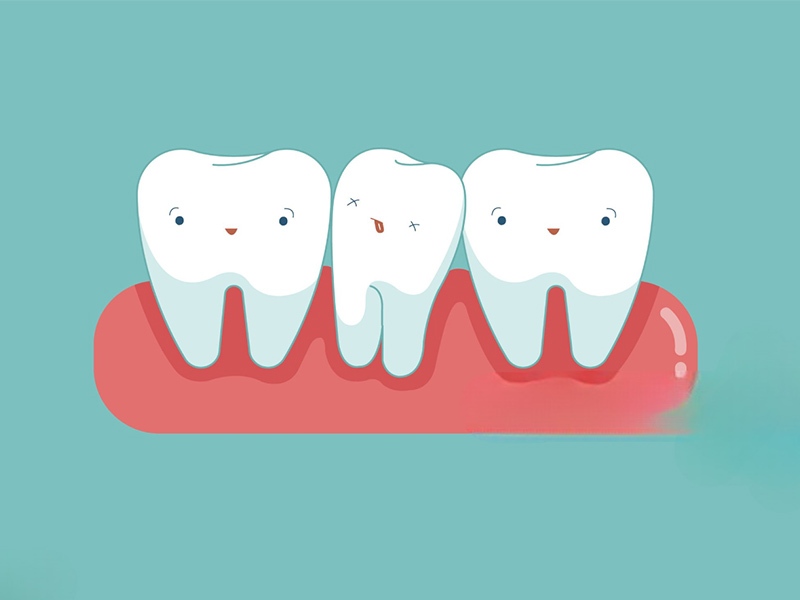
Hypodontia: Causes, Consequences, and What You Need to Know About Missing Teeth
That moment when you look in the mirror and think, “Why hasn’t that tooth come in yet?” or maybe your kid’s dentist just told you that she actually doesn’t have her adult lateral incisor. Don’t worry — you’re not alone, and it’s totally normal to be concerned. Whether you’re a parent, someone curious, or just want to know more about hypodontia, it’s okay to have questions. It can be confusing if you or your child finds gaps in a smile you weren’t expecting. So what’s actually going on — and what can you do about it?
Let’s walk through it, step by step.
Table of Contents
What Is Hypodontia? (And What Isn’t It)
Let’s start with the biggest question.
What is hypodontia?
Hypodontia just means missing one or more grown-up teeth (not counting wisdom teeth) — and it’s not because of an injury or a rotten tooth, these teeth just never grew at all. Think of it this way: making your smile is like following a Lego set. Sometimes, a few pieces are missing from the box.
Is It the Same as Losing a Tooth?
Nope. Losing a tooth usually happens after your teeth have come in, from things like cavities, gum problems, or getting hit in the mouth. Hypodontia starts before you’re even born: for some reason, your body skips making one or more teeth.
Other Words You Might Hear
- Tooth agenesis: A general word for missing teeth at birth.
- Oligodontia: Missing six or more teeth (but not wisdom teeth).
- Anodontia: Very rare — no teeth at all!
How Common Is Hypodontia?
You might be shocked by how many people deal with it. About 3–10% of people everywhere (except for wisdom teeth) are missing at least one permanent tooth that never came.
A few more facts:
- Grown-up teeth are affected a lot more than baby teeth (less than 1% of kids have missing baby teeth).
- Second premolars and top side front teeth go missing most (after wisdom teeth).
- Some families are much more likely to have hypodontia because it runs in their genes.
Types and Levels of Hypodontia
Not all cases look the same. Some just have one tooth gone, others may have a bunch.
By Number of Missing Teeth
- Mild Hypodontia: 1 or 2 missing grown-up teeth (not wisdoms)
- Moderate Hypodontia: 3 to 5 missing
- Oligodontia: 6 or more gone
- Anodontia: No teeth — extremely rare
By Teeth Set
- Primary hypodontia: Baby teeth are missing — really rare.
- Permanent hypodontia: Most common; grown-up teeth just never come in.
Syndromic vs. Not
- Non-syndromic: Just missing teeth, nothing else wrong.
- Syndromic: Part of a bigger genetic issue (like Down syndrome or ectodermal dysplasia) affecting more than just the mouth.
Why Does Hypodontia Happen? (Causes and Risk Factors)
You might be asking — why does this happen at all? Can you stop it? The answer isn’t always clear, but we know quite a bit.
Genes: The Most Usual Cause
Genes are nearly always at fault. Just like eye color or how tall you get, the plans for your teeth come from parents.
Some people just have a “missing page” for a certain tooth or two.
- At least half of all non-syndromic hypodontia cases come from genes.
- Certain gene changes are involved, such as PAX9, MSX1, AXIN2, and WNT10A.
Think of these genes like the builders for teeth — if the plan skips a room, the builder just leaves it out.
It isn’t unusual for hypodontia to show up in families.
Things That Happen Around You or While Growing
Not all cases are about genes. Sometimes, other stuff makes a difference:
- Mom’s health while pregnant: Sickness, being very short on good food, or infections can mess with how teeth form in the womb.
- Medicines: A few drugs (like thalidomide) taken during early pregnancy can be linked to missing teeth.
- Local injury or sickness: Hurt to the gums or jaw of a young child — even before teeth come in — can cause problems.
- Problems with hormones or body chemistry: Rare, but sometimes these can get in the way.
Genetic Syndromes
Some health problems always seem to go with hypodontia. Some examples:
- Ectodermal dysplasia: Nearly every person with the “classic” type is missing lots of teeth, along with thin hair and trouble sweating.
- Down syndrome (Trisomy 21): Up to 70% are missing teeth, often more than one.
- Cleft lip and/or palate: Lots of missing teeth (especially near the split).
- Others: Stuff like Rieger syndrome, orofacial splits, and more.
What Can Happen: Teeth Health, Confidence, and More
Okay, so you or your kid has a missing tooth — or more. So what? While it’s true that plenty of people get by just fine with mild hypodontia, it’s not always so simple.
Let’s look at what can go on.
Teeth Health and How Your Mouth Works
1. Crooked Bite
Missing teeth mess with the way your bite lines up. If you think about pulling out a book from a tight shelf, everything nearby tends to slide over and leave a mess. That’s how teeth can bunch up, space out, or cause problems like overbites.
2. Eating
Having fewer teeth (like missing molars or premolars) makes chewing tough foods hard. Some food may be off-limits, or eating just isn’t as fun.
3. Talking
A few sounds, like “s” and “th,” really need certain teeth. If you’re missing front teeth, you may lisp or have trouble pronouncing things clearly, especially if you’re a kid.
4. Jaw and Face Growth
Teeth help the jaw grow the right way. If there aren’t enough teeth, the jawbone may not fill in fully, and that can change how a face looks as you grow. Tear enough books off a shelf, and the whole thing starts to sag.
5. Gum and Leftover Teeth Health
If there are big spaces, the other teeth might wear down more, tilt, or grow too far. Plaque can build up in weird spots and set you up for cavities or gum disease where you do have teeth.
Looks and Feelings
1. How You See Yourself
Let’s be honest — smiles are important. Gaps in places you can see easily often make both kids and grown-ups feel awkward or embarrassed, especially with all the photos and video calls we do now.
2. Social Worries and Feeling Confident
Some researchers say nearly eight out of ten people with easy-to-see hypodontia feel self-conscious, and about half might avoid pictures or groups where their smile could show.
3. Life Quality
Feeling upset about how you look can even change your mood or make you less confident at school or work. It’s not just about looks — it’s about how you feel too.
Quick Fact: Teens with hypodontia usually score lower on “oral-health quality of life” than other kids their age.
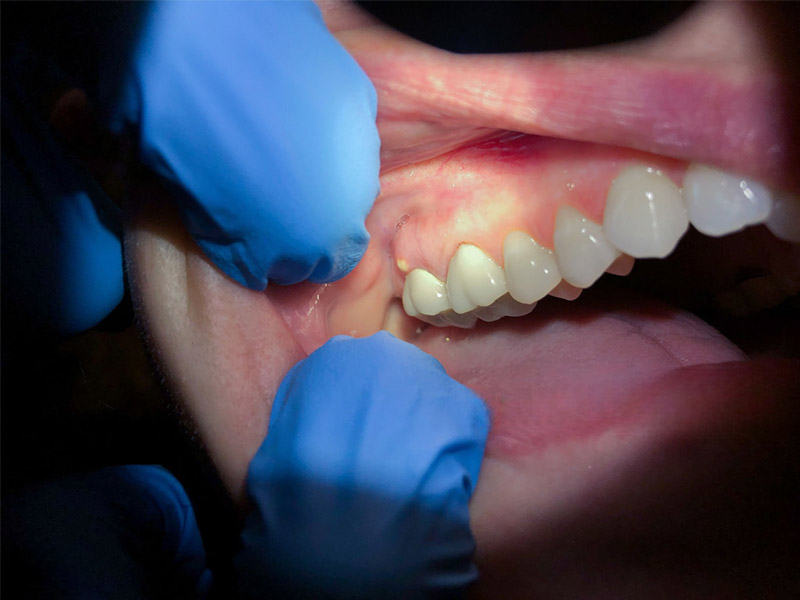
How Do You Find Hypodontia?
You don’t have to guess. Dentists and orthodontists have solid ways to spot hypodontia early and for sure.
What Happens?
- Dental Exam and Questions
Your dentist looks closely at the mouth, checks for any missing teeth, and asks about family medical stuff. - Dental X-rays
Panoramic (big full-mouth) x-rays, sometimes small close-up x-rays, or modern 3D scans can show clearly which teeth are there, coming in, or totally gone. For many, this is when the missing tooth becomes obvious. - Gene Testing and Advice
If you’re missing a bunch of teeth, or there are other health things going on, your dentist may suggest seeing a specialist or gene expert.
When Should Tests Happen?
The sooner, the better.
Kids as young as six or seven may get x-rays if their teeth aren’t coming in at the usual time.
Knowing about it early helps you plan what to do — both for getting treatment and just knowing what to expect.
What Can You Do? Treatment Choices
Realizing you or your child has hypodontia can be confusing at first. But don’t worry — there are lots of ways to help.
Let’s go from the simplest to the more advanced.
Basic and Early Steps
1. Just Watching:
A lot of mild cases just need checkups. The dentist keeps track of how things grow and helps you know when (or if) you need to do anything.
2. Space Holders:
If a baby tooth falls out too early (especially for kids), a small device can hold the place so the right tooth can come in later. It’s like saving a parking spot.
Dentist Treatments
1. Braces or Aligners
Braces or clear guides can:
- Close up small gaps when possible
- Make sure there’s enough space for future “fake” teeth (like implants or bridges)
- Stop other teeth from moving into the wrong spots
2. Fake Teeth (Prosthetics)
If a tooth shows when you smile or it’s easier to eat with it, replacing it can really help.
- Dental Implants: Strong metal posts go into the jawbone. When healed, a made-to-fit tooth sits on top. They last long and look real, but you’ll need enough bone, and implants often wait until you stop growing.
- Dental Bridges: Teeth on the sides hold a fake tooth in the middle.
- Removable Partial Dentures: Take-in and take-out devices for a few missing teeth, especially if implants or bridges just aren’t an option.
3. Moving Teeth (Transplanting)
Now and then, a less important tooth (like a baby tooth or a tooth that’s coming out for braces) gets moved to fill a gap. This works best for kids and teens.
4. Building Up Bone
If your jawbone isn’t sturdy enough for an implant, your dentist might add extra bone. New methods for growing bone and gums are also getting better all the time.
Who Helps With Treatment?
If things are tricky, you might work with:
- A kid’s dentist
- An orthodontist (braces or aligners)
- A prosthodontist (replacement teeth)
- An oral surgeon
- A speech therapist (for talking problems)
- Maybe even a gene specialist
A team approach means you get the right plan for your needs.
Should You Worry? Is This You (or Your Kid)?
Wondering if you or your kid could have hypodontia? Look for:
Kids
- When adult teeth just don’t come in when others do (especially front teeth or premolars)
- A “baby tooth” stays in a lot longer than the rest
- Multiple people in the family missing teeth
Teens and Adults
- Spaces in your smile where you never lost a tooth to a cavity or accident
- Trouble chewing or speaking
- Trying not to smile or feeling shy about your teeth
Remember: Even one missing tooth is worth talking about with your dentist, just to know your options.
Your Healthy Takeaway (Key Points & Next Steps)
Here’s what to remember and how to move forward.
Key Points
- Hypodontia means being born without one or more teeth — it’s actually pretty common, mostly from genes, and not your fault.
- Missing teeth can lead to problems chewing and with your jaw, but also affect how you feel about your looks.
- The sooner you spot it (especially in kids), the better your choices for simple fixes.
- Fixes go from doing nothing, to getting braces or a fake tooth, and more — there’s usually something that works for you.
- Sometimes, a bunch of dental experts will work together to get you the best result.
- No one has to “just get used to gaps” if they don’t want to.
What To Do Next
- See your dentist or orthodontist — if you’re worried about missing teeth, don’t put it off! The sooner you start asking, the more options you have.
- Ask questions — talk about your health, your family, or anything on your mind.
- Think about seeing a specialist — with tough cases, a team is usually best.
- Stay hopeful — Modern dentistry can help almost everyone.
Quick Questions & Answers About Hypodontia
1. Is hypodontia passed down?
Yes, most of the time it’s in the family — especially if it shows up in a few generations.
2. Can you stop hypodontia before it happens?
Not now! Because it’s mostly from genes or very early in life, there isn’t a way to totally prevent it — but catching it early means better care.
3. Do missing teeth always need fixing?
Not always. Some spaces aren’t a big problem. But fixing them usually helps for looks, eating, and talking.
4. Should you treat baby teeth with no adult tooth under them with extra care?
Yes — keep those baby teeth healthy as long as you can; they may last for years.
5. How much does fixing missing teeth cost?
It depends a lot on what you pick. Implants are pricier, while removable stuff or some braces can be easier on your wallet. Insurance may help.
Cited Sources and Resources
- American Dental Association (ADA)
- American Association of Orthodontists (AAO)
- National Institutes of Health (NIH)
- World Health Organization (WHO)
- Studies about life quality in people with hypodontia
- Medically reviewed by [Insert Dentist’s Name, DDS or DMD if you want]
Still got questions? Don’t be shy — your dental team is there to help. Missing teeth don’t mean you have to miss out on things. Whether you want to eat better, smile wider, or just know what’s happening in your mouth (or your kid’s), now you know the basics to get started. Book a checkup and talk it through. Your smile’s story isn’t done yet.

